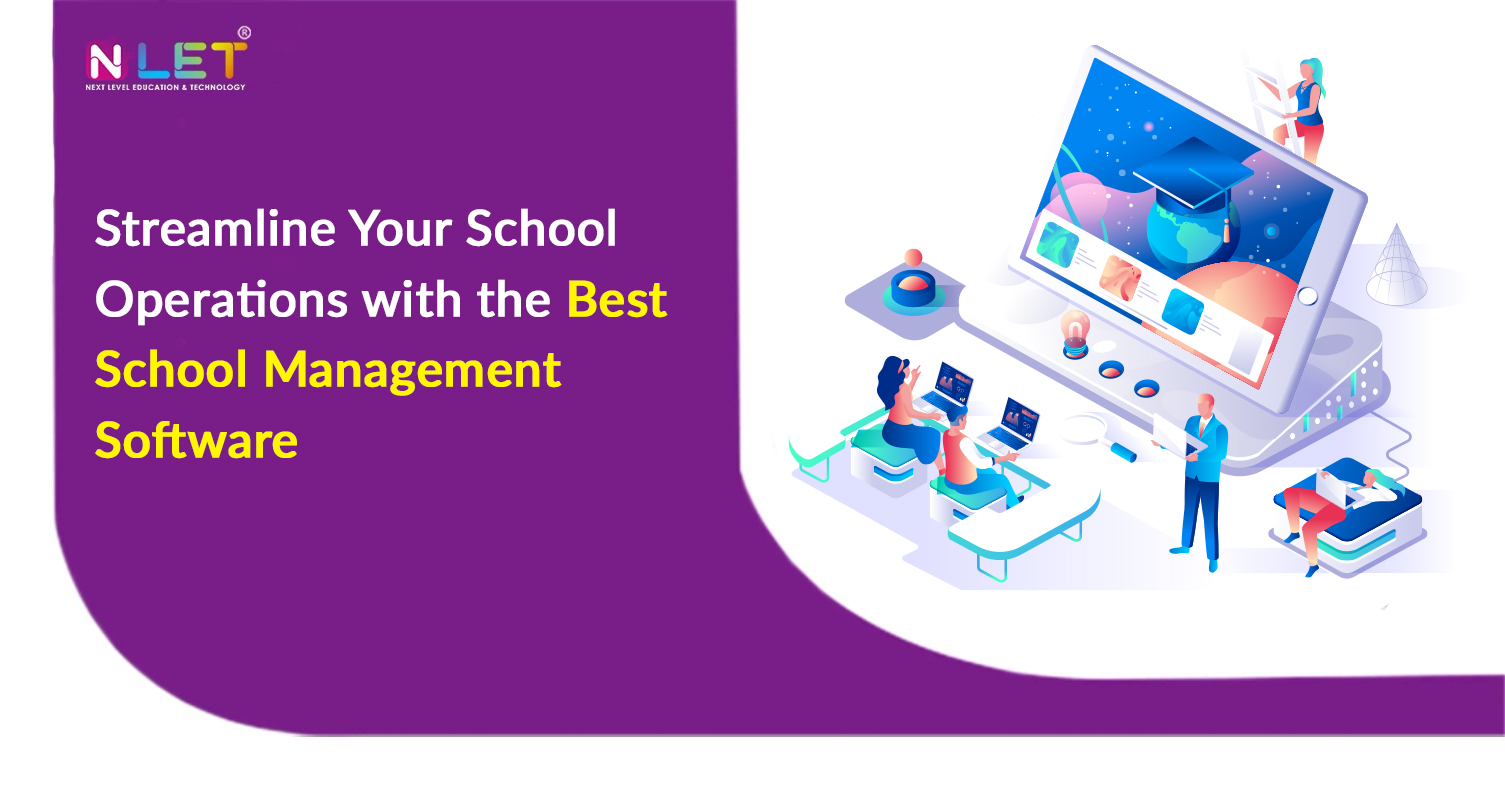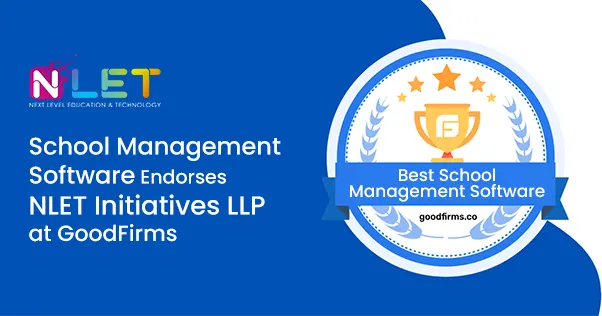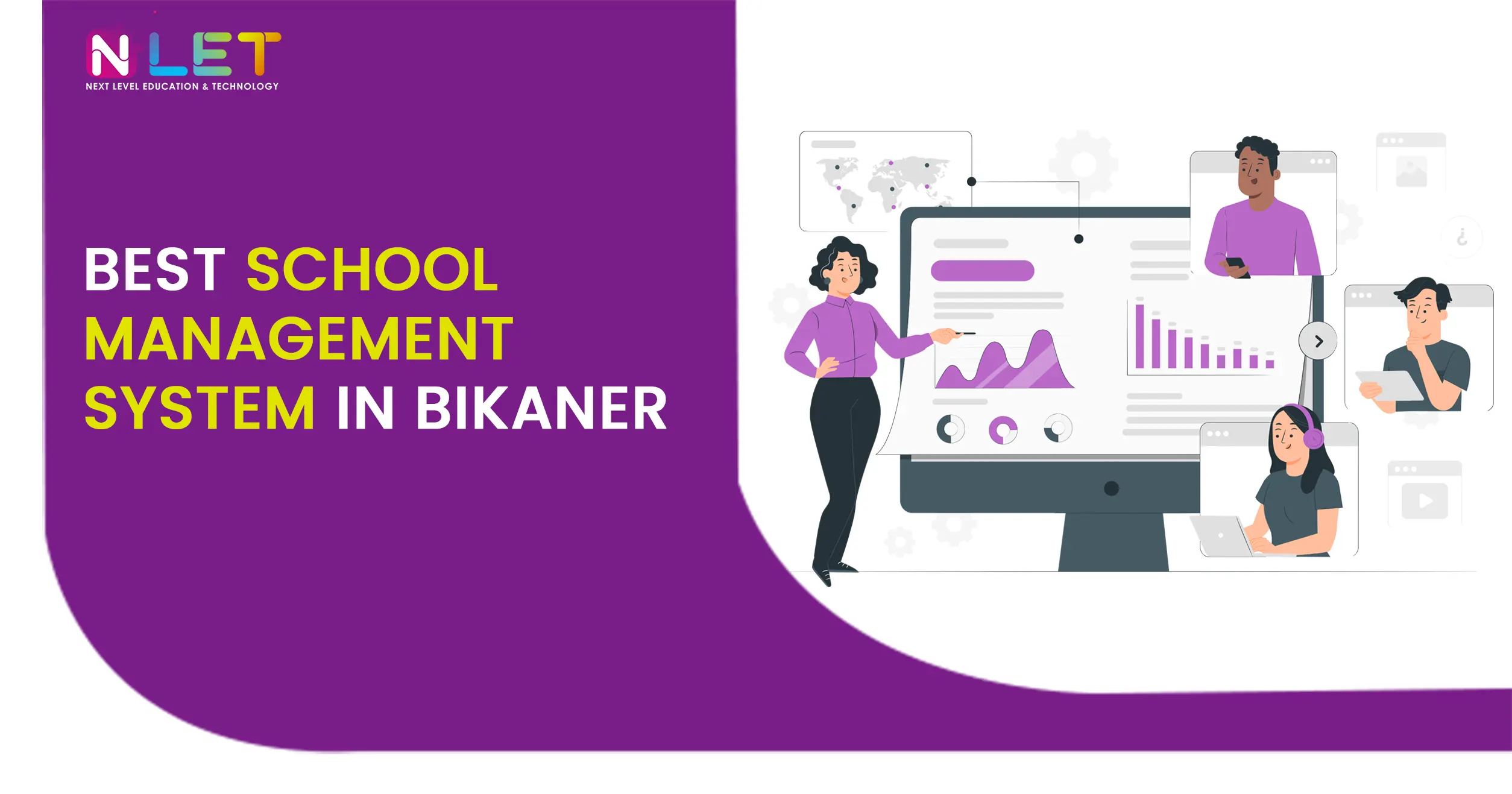
Are you tired of managing multiple aspects of your school operations manually? Do you wish there was an easier and more efficient way to streamline the administrative tasks and enhance the experience for students, staff, and parents? Look no further!
With the best school management software, you can take control of your school's operations and create a seamless, organised, and productive environment.
Whether you need assistance with attendance tracking, student information management, timetable scheduling, or fee management, the right school management software has got you covered. Say goodbye to paperwork, endless spreadsheets, and data entry errors. This cutting-edge technology automates processes, centralizes data, and provides real-time insights to help you make informed decisions.
Designed with user-friendliness and flexibility in mind, the best school management software caters to the unique needs of educational institutions of all sizes. With its intuitive interface and comprehensive features, it simplifies complex tasks and empowers administrators, teachers, and parents to be more productive and engaged.
Don't let outdated systems hinder your school's efficiency and growth. Embrace the power of technology and transform your school operations with the best school management software.
Benefits of using school management software
Managing a school involves juggling various tasks, from attendance tracking to student information management, timetable scheduling, and fee management. These tasks can be time-consuming, prone to errors, and overwhelming. However, with the right school management software, you can automate these processes, centralize data, and gain real-time insights into your school's operations.
One of the key benefits of using school management software is the elimination of paperwork. Gone are the days of manually filling out forms, managing endless spreadsheets, and dealing with data entry errors.
School management software allows you to digitize and store student records, attendance, grades, and more in a secure and easily accessible manner. This not only saves time but also reduces the risk of losing important information.
Another advantage of school management software is the ability to streamline communication between various stakeholders. With a centralized platform, administrators, teachers, students, and parents can easily access important information, such as announcements, schedules, grades, and assignments.
This improves transparency, enhances collaboration, and strengthens the overall educational experience.
Additionally, school management software provides valuable insights and analytics that can help administrators make informed decisions. By analyzing data on attendance, student performance, and resource allocation, schools can identify areas for improvement, optimize their operations, and ultimately enhance the learning outcomes for students.
In summary, the benefits of using school management software include:
- Automation of administrative tasks
- Centralized data storage and accessibility
- Improved communication and collaboration
- Real-time insights and analytics for informed decision-making
Key features to look for in school management software
When choosing the best school management software for your institution, it is important to consider the key features that will meet your specific needs. While different software options may offer a wide range of features, here are some essential ones to look for:
Attendance tracking: A robust school management software should have a comprehensive attendance tracking system that allows for easy recording and monitoring of student attendance. Look for features such as automated attendance marking, real-time notifications, and customizable reports.
Student information management: The software should provide a centralized database to store and manage student information, including personal details, contact information, academic records, and medical information. Look for features that allow for easy data entry, search, and retrieval.
Timetable scheduling: Efficient timetable scheduling is crucial for effective school operations. Look for software that offers a user-friendly interface for creating and managing timetables, with features such as class allocation, teacher availability, and clash detection.
Fee management: Keeping track of fees, payments, and invoices can be a daunting task. Look for software that automates fee management processes, including fee collection, reminders, and reports. It should also provide options for online payment integration and generate receipts for easy record-keeping.
Grading and assessment: An effective school management software should have features that facilitate grading and assessment, including customizable grade scales, automated grade calculations, and the ability to generate report cards.
Communication and collaboration: Look for software that provides a platform for seamless communication and collaboration between administrators, teachers, students, and parents. This can include features such as messaging systems, discussion forums, and parent portals.
Analytics and reporting: A good school management software should offer robust analytics and reporting capabilities. Look for features that allow you to generate reports on various aspects of your school's operations, such as attendance, student performance, and resource utilization.
These are just some of the key features to consider when evaluating school management software options. Depending on your specific needs, you may also want to look for additional features such as library management, transportation management, and online examination modules.
Popular school management software options
Now that you understand the benefits and key features of school management software, let's explore some popular options available in the market today. These software solutions have been widely adopted by educational institutions worldwide and have proven track records of success.
SchoolMation: SchoolMation is a comprehensive school management software that offers a wide range of features to streamline your school's operations. From attendance tracking to student information management, timetable scheduling, and fee management, SchoolMation has got you covered. It also provides robust analytics and reporting capabilities to help you make data-driven decisions.
PowerSchool:
PowerSchool is a popular choice among schools for its user-friendly interface and extensive feature set. It offers modules for attendance tracking, grade management, parent communication, and more. PowerSchool also provides integration options with other educational software and platforms, making it a versatile choice for schools of all sizes.
Fedena: Fedena is an open-source
school management system that offers a customizable and scalable solution. It provides modules for various tasks such as attendance tracking, timetable management, finance management, and more. Fedena also offers mobile apps for easy access on the go.
SchoolBrains: SchoolBrains is a cloud-based school management software that focuses on creating a seamless experience for administrators, teachers, and parents. It offers features such as attendance management, gradebook, student information management, and communication tools. SchoolBrains also provides integrations with popular learning management systems.
These are just a few examples of the many school management software options available in the market. When choosing the best software for your institution, it is important to consider factors such as your budget, specific requirements, and the level of support and training provided by the software vendor.
Factors to consider when choosing the best school management software for your institution
Choosing the best school management software for your institution is a decision that should not be taken lightly. It is important to consider various factors to ensure that the software meets your specific needs and aligns with your school's goals. Here are some key factors to consider when evaluating different options:
Scalability: Consider the size of your institution and whether the software can scale to accommodate your current and future needs. Ensure that the software can handle your student enrollment, staff size, and any potential growth.
Integration capabilities: Determine whether the software can integrate with other systems or platforms that you are currently using or plan to use in the future. This can include learning management systems, accounting software, or communication tools.
User-friendliness: The software should have an intuitive and user-friendly interface that can be easily navigated by administrators, teachers, students, and parents. Look for demos or trial versions to test the software's usability.
Customizability: Consider whether the software allows for customization to suit your specific requirements. Each school has unique processes and workflows, so it is important to ensure that the software can adapt to your needs.
Security and data privacy: Ensure that the software provides robust security measures to protect sensitive student and school data. Look for features such as data encryption, role-based access control, and regular data backups.
Training and support: Evaluate the level of training and support provided by the software vendor. A good vendor should offer comprehensive training materials, documentation, and responsive customer support to assist you in the implementation and ongoing usage of the software.
Cost considerations: Consider your budget and the total cost of ownership of the software. This includes not only the initial licensing or subscription fees but also any additional costs such as training, customization, and ongoing support.
By considering these factors, you can make an informed decision when choosing the best school management software for your institution. It is also beneficial to involve key stakeholders, such as administrators, teachers, and IT staff, in the evaluation and selection process to ensure that their needs and concerns are addressed.
Implementing school management software in your school
Implementing school management software requires careful planning and coordination to ensure a smooth transition and successful adoption. Here are some steps to follow when implementing school management software in your school:
Define your goals and objectives: Clearly define the goals and objectives you want to achieve with the implementation of the software. This can include improving efficiency, enhancing communication, or increasing data accuracy. Having clear goals will help guide the implementation process and measure success.
Identify key stakeholders: Identify key stakeholders who will be involved in the implementation process. This can include administrators, teachers, IT staff, and parents. Involve these stakeholders from the beginning to gather their input, address their concerns, and ensure their buy-in.
Select a project team: Form a project team that will be responsible for overseeing the implementation process. This team should include representatives from different departments or roles within the school to ensure a comprehensive approach.
Assess your data: Before implementing the software, assess the quality and accuracy of your existing data. Clean up any duplicate or outdated records and ensure that the data is in a format that can be easily migrated to the new system.
Plan the implementation timeline: Create a detailed timeline that outlines the various stages of the implementation process, including data migration, configuration, training, and testing. Ensure that the timeline is realistic and allows for sufficient time for training and testing.
Configure the software: Work closely with the software vendor or implementation team to configure the software according to your school's specific requirements. This can include setting up user roles and permissions, customizing forms and reports, and integrating with other systems.
Train your staff: Provide comprehensive training to your staff to ensure they understand how to use the software effectively. This can include on-site or online training sessions, user manuals, video tutorials, or workshops. Consider providing ongoing training and refresher sessions as needed.
Communicate with stakeholders: Keep stakeholders informed about the implementation progress and any changes or updates. Communicate the benefits of the software and address any concerns or questions they may have.
Test and validate: Conduct thorough testing of the software to ensure that it meets your requirements and functions as expected. Test different scenarios and involve key users in the testing process to gather feedback and identify any issues or areas for improvement.
Go live and monitor: Once the software has been tested and validated, plan a smooth transition to the new system. Monitor the usage and adoption of the software, gather feedback from users, and address any issues or challenges that arise.
By following these steps, you can ensure a successful implementation of school management software in your school. Remember that the implementation process is not just about the technical aspects but also involves the engagement and support of your staff and stakeholders.
Training and support for school management software
Implementing school management software is not just about the technology itself but also about providing the necessary training and support to ensure its successful adoption. Here are some considerations for training and support when implementing school management software:
Vendor-provided training: Most software vendors offer training materials, documentation, and resources to help you and your staff learn how to use the software effectively. Take advantage of these resources and ensure that your staff receives comprehensive training.
On-site or online training: Consider providing on-site or online training sessions to your staff to ensure they have a hands-on learning experience. This can include training workshops, demonstrations, or interactive sessions where users can ask questions and practice using the software.
User manuals and tutorials: Provide user manuals or tutorials that outline the step-by-step processes for using the software. These resources can serve as a reference guide for your staff and help them navigate the software independently.
Train-the-trainer approach: Consider implementing a train-the-trainer approach where key staff members are trained by the software vendor or implementation team and then serve as internal trainers for other staff members. This can help build internal expertise and ensure ongoing support for the software.
Ongoing support: Ensure that the software vendor or implementation team offers ongoing support to address any questions, issues, or concerns that may arise after the implementation. This can include a dedicated support hotline, email support, or an online helpdesk system.
User feedback and improvement: Encourage your staff to provide feedback on the software and share their experiences. This feedback can help identify areas for improvement, additional training needs, or new features that may enhance the usability of the software.
Remember that training and support are ongoing processes, not just one-time events. It is important to provide continuous support to your staff, address their questions and concerns, and provide opportunities for additional training or refresher sessions as needed.
Case studies of schools that have successfully implemented school management software
To further illustrate the benefits and impact of school management software, let's explore some case studies of schools that have successfully implemented these systems:
Case Study 1: XYZ International School
XYZ International School, a large K-12 institution with over 2000 students, was struggling with manual processes and outdated systems. They implemented a comprehensive school management software that automated their administrative tasks, streamlined communication, and provided valuable insights into their operations.
With the new software, attendance tracking became more efficient, and teachers could easily mark attendance and generate reports. The software's timetable scheduling module allowed for optimized class schedules, reducing conflicts and maximizing teacher availability. The finance department benefited from the automated fee management system, which improved fee collection and reduced errors.
The software also improved communication between teachers, students, and parents. The messaging system allowed for instant communication, and the parent portal provided easy access to important information such as grades, attendance, and announcements. Overall, the software transformed XYZ International School's operations, saving time, improving efficiency, and enhancing the educational experience for all stakeholders.
Case Study 2: ABC Elementary School
ABC Elementary School, a small elementary school with limited resources, implemented a cloud-based school management software to streamline their operations. The software provided all the essential features they needed, including attendance tracking, student information management, and communication tools.
The software's attendance tracking module allowed teachers to easily mark attendance and generate reports, reducing the time spent on manual record-keeping. The student information management module provided a centralized database for storing and managing student information, making it easier to access and update records.
ABC Elementary School also benefited from the software's communication tools, which improved collaboration between teachers and parents. The messaging system allowed for quick and effective communication, and the parent portal provided parents with access to important information such as announcements, assignments, and grades.
For more info, visit NLET School, a part of NLET, providing
the best School Management Software to streamline and automate school
operations efficiently.
Related Posts

Working with a mission to take education to the next level with digiti...
Continue reading

Do you remember how at the old schools, bundles of papers and files we...
Continue reading


